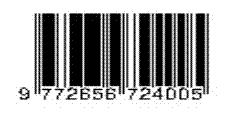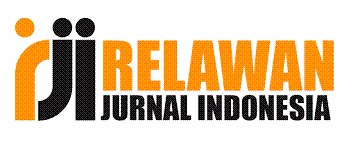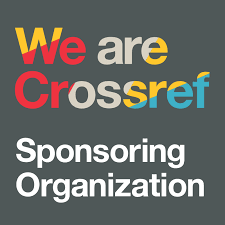Facilitating Students’ Multiple Intelligences through RME: A Learning Trajectory of Volume and Surface Area Measurement
Abstract
This is a design research which aims to describe the learning trajectory of volume and surface area of rectangular prism by considering the involvement of the multiple intelligences-based activities within the realistic mathematics education (RME) learning activity. A total of 39 students of grade five at an elementary school in Sidoarjo, Indonesia were involved in teaching experiment phase. By collecting data through documentation, interviews, and classroom observations, the Hypothetical Learning Trajectory which was developed in pilot experiment was then revised to get a revised learning trajectory reported in this paper. Such a revised learning trajectory are the learning activities around drawing the nets of cube and cuboids through rolling activity, comparing surface are and volume of two models with different sizes, finding surface area using the constructed nets, building miniature buildings using cube unit model, predicting the number cube units in a box, constructing various models of cuboids to various sizes using particular number of cube units, rearranging a number of cube units arrangements with different layers to get different volume and surface area, and comparing the volumes of two rectangular prism made from the same rectangular model of paper. Lastly, at the ‘formal level’ students developed their informal knowledge into formal concepts of volume and surface area of rectangular prism, which in this case is cuboid and cube.
References
Adams, T. L. (2000). Helping children learn mathematics through multiple intelligences and standards for school mathematics. Childhood Education, 77(2), 86-94. https://doi.org/10.1080/00094056.2001.10521636
Armstrong, T. (2009). Multiple intelligences in the classroom. Ascd.
Bakker, A. (2004). Design Research in Statistics Education on Symbolizing and Computer Tools. Amersfoort: Wilco Press. https://dspace.library.uu.nl/handle/1874/893
Battista, M. T. (2004). Applying cognition-based assessment to elementary school students' development of understanding of area and volume measurement. Mathematical Thinking and Learning, 6(2), 185-204. https://doi.org/10.1207/s15327833mtl0602_6
Bednar, J., Coughlin, J., Evans, E., & Sievers, T. (2002). Improving Student Motivation and Achievement in Mathematics through Teaching to the Multiple Intelligences. Chicago: School of Education, St Xavier University. https://files.eric.ed.gov/fulltext/ED466408.pdf
Bellanca, J. (2008). 200+ Active Learning Strategies and Projects for Engaging Students Multiple Intelligences. Corwin Press.
Bustang, B., Zulkardi, Z., Darmawijoyo, H., Dolk, M., & van Eerde, D. (2013). Developing a Local Instruction Theory for Learning the Concept of Angle through Visual Field Activities and Spatial Representations. International Education Studies, 6(8), 58-70. https://doi.org/10.5539/ies.v6n8p58
Curry, M., Mitchelmore, M., & Outhred, L. (2006, July). dyke In Proceedings 30th Conference of the International Group for the Psychology of Mathematics Education (Vol. 2, pp. 377-384).
Fatoni, F., Putri, R. I. I., & Hartono, Y. (2015). Permainan Tradisional Batok Kelapa dalam Membangun Konsep Pengukuran Panjang Kelas II SD. Jurnal Cakrawala Pendidikan, 1(1).
Gardner, H. (1999). Intelligence reframed: Multiple intelligences for the 21st century. Basic books.
Gouws, E., & Dicker, A. M. (2011). Teaching mathematics that addresses learners’ multiple intelligences. Africa Education Review, 8(3), 568-587.
Gravemeijer, K. (2004). Local instruction theories as means of support for teachers in reform mathematics education. Mathematical thinking and learning, 6(2), 105-128. https://doi.org/10.1207/s15327833mtl0602_3
Gravemeijer, K., & Cobb, P. (2006). Design research from a learning design perspective. Educational design research, 17-51.
Gravemeijer, K., & van Eerde, D. (2009). Design research as a means for building a knowledge base for teachers and teaching in mathematics education. The Elementary School Journal, 109(5), 510-524. https://www.journals.uchicago.edu/doi/abs/10.1086/596999
Hasmiwati & Widjajanti, D. B. (2020, July). Mathematics learning based on multiple intelligences with scientific approaches: How are their roles in improving mathematical literacy skills?. In Journal of Physics: Conference Series (Vol. 1581, No. 1, p. 012040). IOP Publishing.
Hasnidar, H., Sulihin, S., & Elihami, E. (2020). Developing of multiple intelligences in students with the two stay two strays type. Edumaspul: Jurnal Pendidikan, 4(2), 7-12. https://ummaspul.e-journal.id/maspuljr/article/view/680
Hong, D. S., & Runnalls, C. (2020). Understanding length× width× height with modified tasks. International Journal of Mathematical Education in Science and Technology, 51(4), 614-625. https://doi.org/10.1080/0020739X.2019.1583383
Işık, D., & Tarım, K. (2009). The effects of the cooperative learning method supported by multiple intelligence theory on Turkish elementary students’ mathematics achievement. Asia Pacific Education Review, 10(4), 465. https://doi.org/10.1007/s12564-009-9049-5
Karamikabir, N. (2012). Gardner's multiple intelligence and mathematics education. Procedia-Social and Behavioral Sciences, 31, 778-781. https://doi.org/10.1016/j.sbspro.2011.12.140
Kohar, A.W & Rosyidi, A.H. (2013) The Development of Mathematics Learning Instruments Integrating Multiple Intelligences on Topics of Cuboid and Cube For The Eighth Grade Students of Junior High School. In: Zulkardi(Eds).The First South East Asia Design/ Development Research (SEA-DR) International Conference, April 22nd-23rd, 2013, Unsri, Palembang. https://repository.unsri.ac.id/9707/1/P3_Ahmad_Kohar_31.pdf
Murni, S., & Ruqoyyah, S. (2020). Development of Teaching Materials Using A Realistic Mathematics Education Approach In A Multiple Intelligences Perspective of Elementary School Students. PrimaryEdu-Journal of Primary Education, 4(2), 208-219. http://www.e-journal.stkipsiliwangi.ac.id/index.php/primaryedu/article/view/1912
Taylor, A. R., & Jones, M. G. (2013). Students’ and teachers’ application of surface area to volume relationships. Research in Science Education, 43(1), 395-411. https://doi.org/10.1007/s11165-011-9277-7
Temur, O. D. (2007). The Effects of Teaching Activities Prepared According to the Multiple Intelligence Theory on Mathematics Achievements and Permanence of Information Learned by 4th Grade Students. International Journal of Environmental and Science Education, 2(4), 86-91. https://files.eric.ed.gov/fulltext/EJ901272.pdf
Tezer, M., Ozturk, R., & Ozturk, C. (2015). A Case Study on the Effect of Geometry Course in High Schools by Multiple Intelligence Theory. Procedia-Social and Behavioral Sciences, 197, 31-37. https://doi.org/10.1016/j.sbspro.2015.07.044
Revina, S., & van Galen, F. (2011). Spatial Visualization Tasks to Support Students' Spatial Structuring in Learning Volume Measurement. Indonesian Mathematical Society Journal on Mathematics Education, 2(2), 127-146. http://dx.doi.org/10.22342/jme.2.2.745.127-146
Sack, J. J. (2013). Development of a top-view numeric coding teaching-learning trajectory within an elementary grades 3-D visualization design research project. The Journal of Mathematical Behavior, 32(2), 183-196. https://doi.org/10.1016/j.jmathb.2013.02.006
Salmah, U., & Putri, R. I. I. (2015). Ten-Structure as Strategy of Addition 1-20 by Involving Spatial Structuring Ability for First Grade Students. International Education Studies, 8(11), 16. https://doi.org/10.5539/ies.v8n11p16
Sulaiman, T., Abdurahman, A. R., & Rahim, S. S. A. (2010). Teaching strategies based on multiple intelligences theory among science and mathematics secondary school teachers. Procedia-Social and Behavioral Sciences, 8, 512-518. https://doi.org/10.1016/j.sbspro.2010.12.070
Susilo, T. A. B., Reza, M. D., Fachrudin, A. D., Widadah, S., & Kohar, A. W. (2018). Pembelajaran Matematika Realistik yang Melibatkan Kecerdasan Majemuk Pada Materi Volume Bangun dan Luas Permukaan untuk Sekolah Dasar. Jurnal Edukasi, 4(2), 99-122.
Tekin-Sitrava, R., & Isiksal-Bostan, M. (2018). The Nature of Middle School Mathematics Teachers' Pedagogical Content Knowledge: The Case of The Volume of Prisms. Australian Mathematics Teacher, 74(1), 22-30.
Van den Heuvel-Panhuizen, M., & Buys, K. (2008). Young children learn measurement and geometry: A learning-teaching trajectory with intermediate attainment targets for the lower grades in primary school. Brill Sense.
Wijaya, A. (2008). Indonesian Traditional Games as Means to Support Second Graders’ Learning of Linear Measurement. Mathematics Educations Master Thesis. Utrecht University.
Wijaya, A. (2012). Pendidikan matematika realistik suatu alternatif pendekatan pembelajaran matematika. Yogyakarta: Graha Ilmu.

























